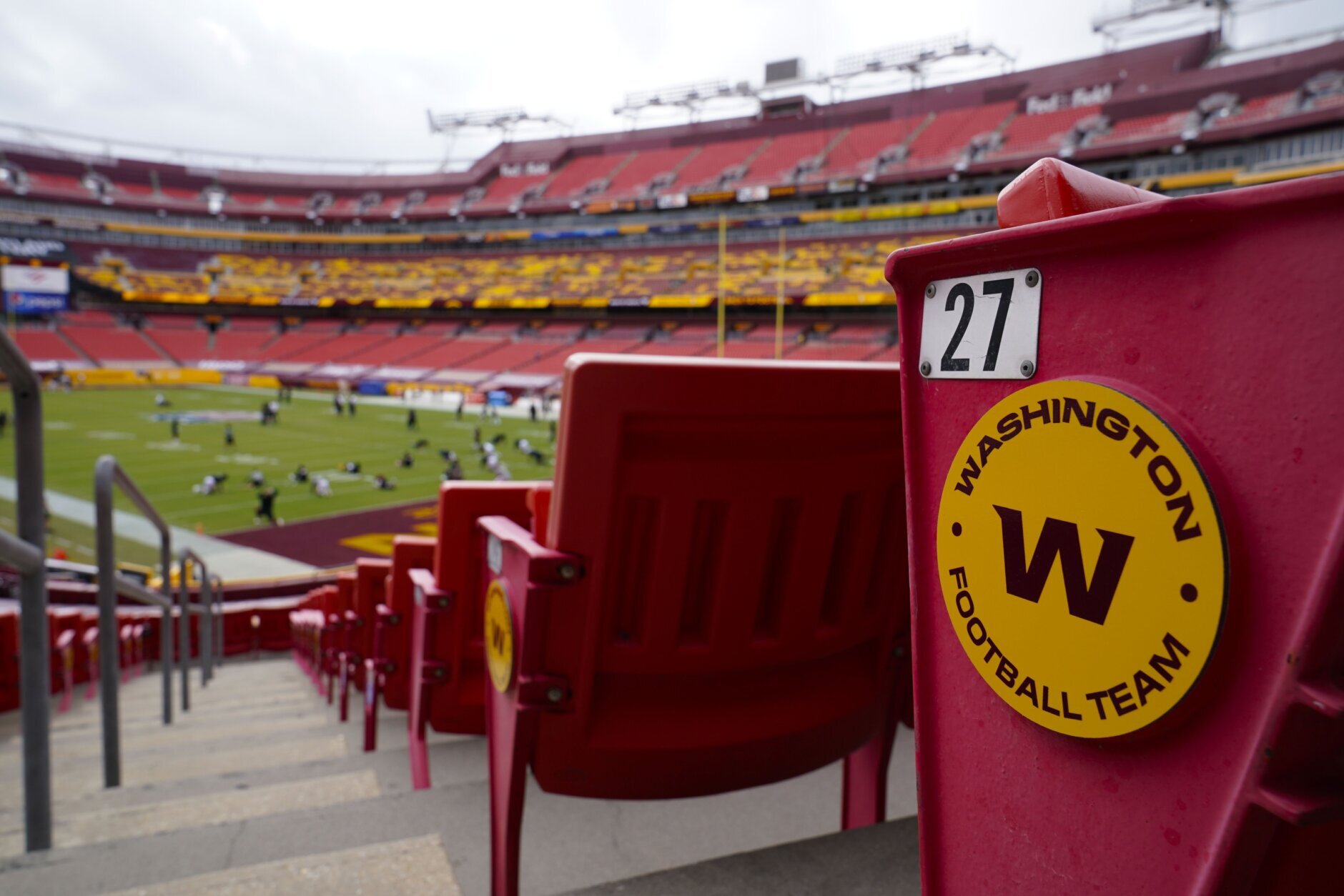
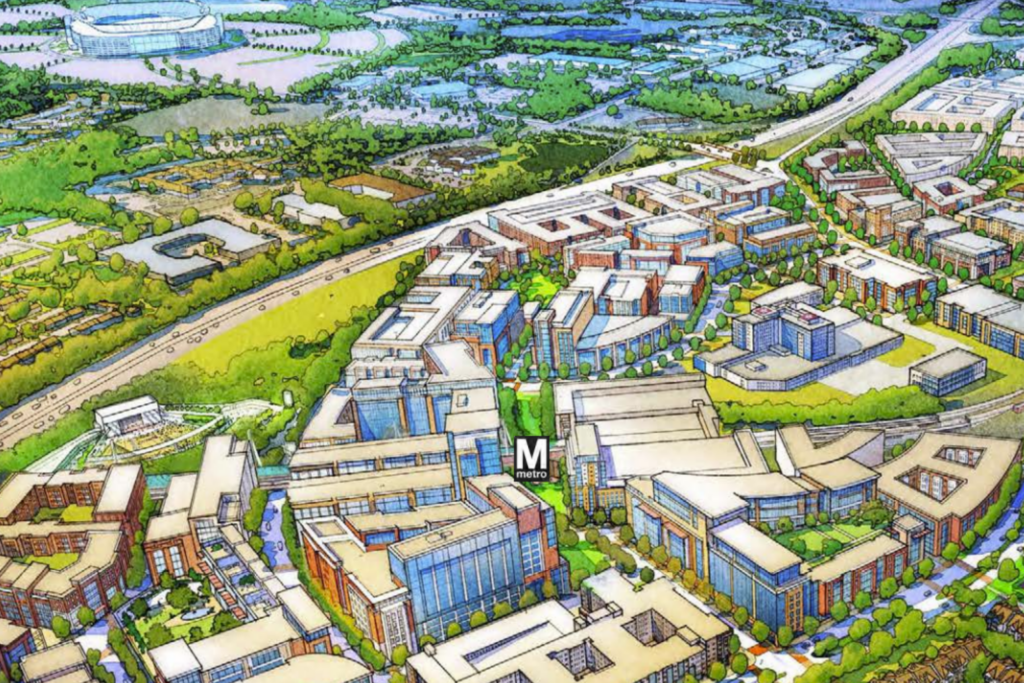
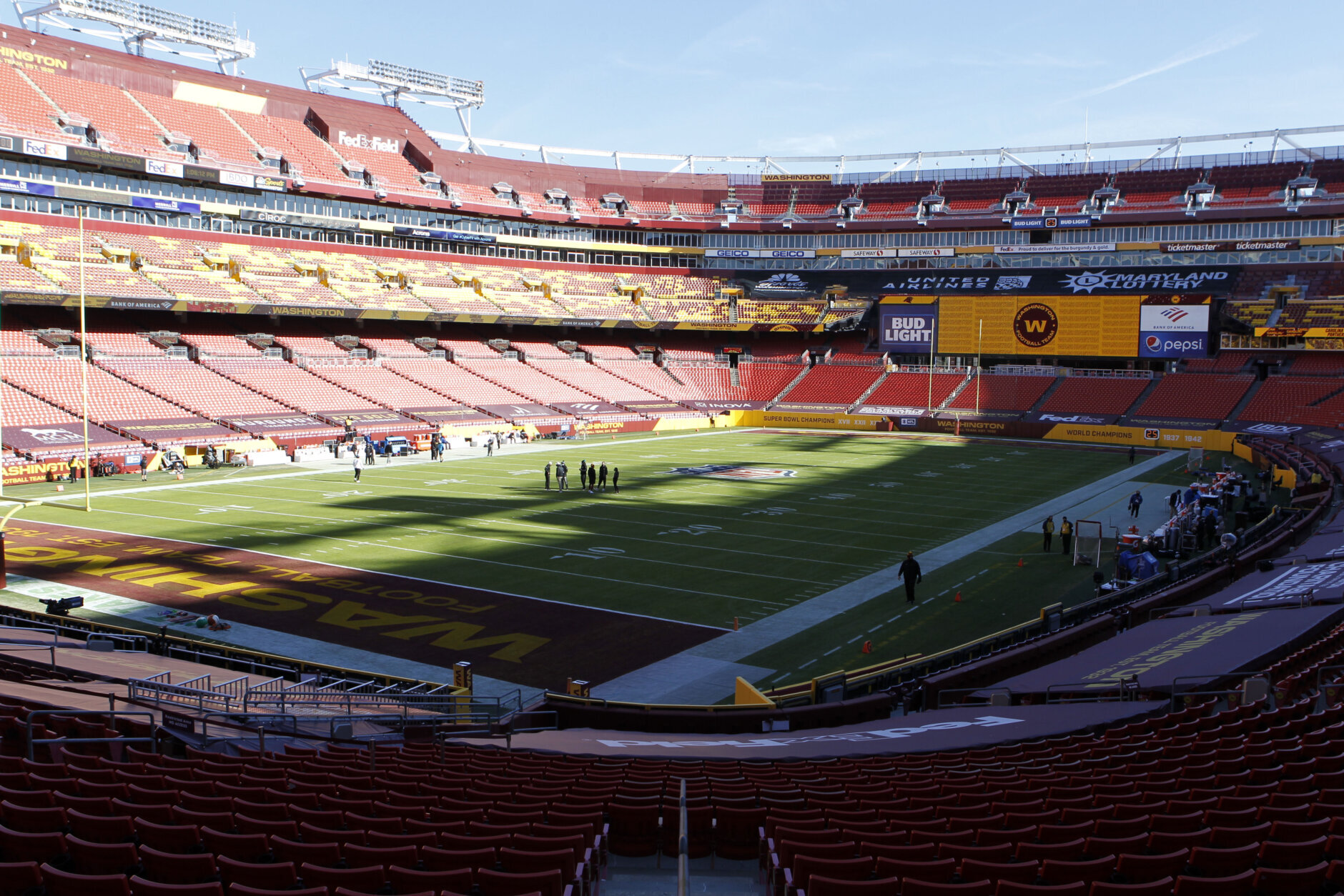
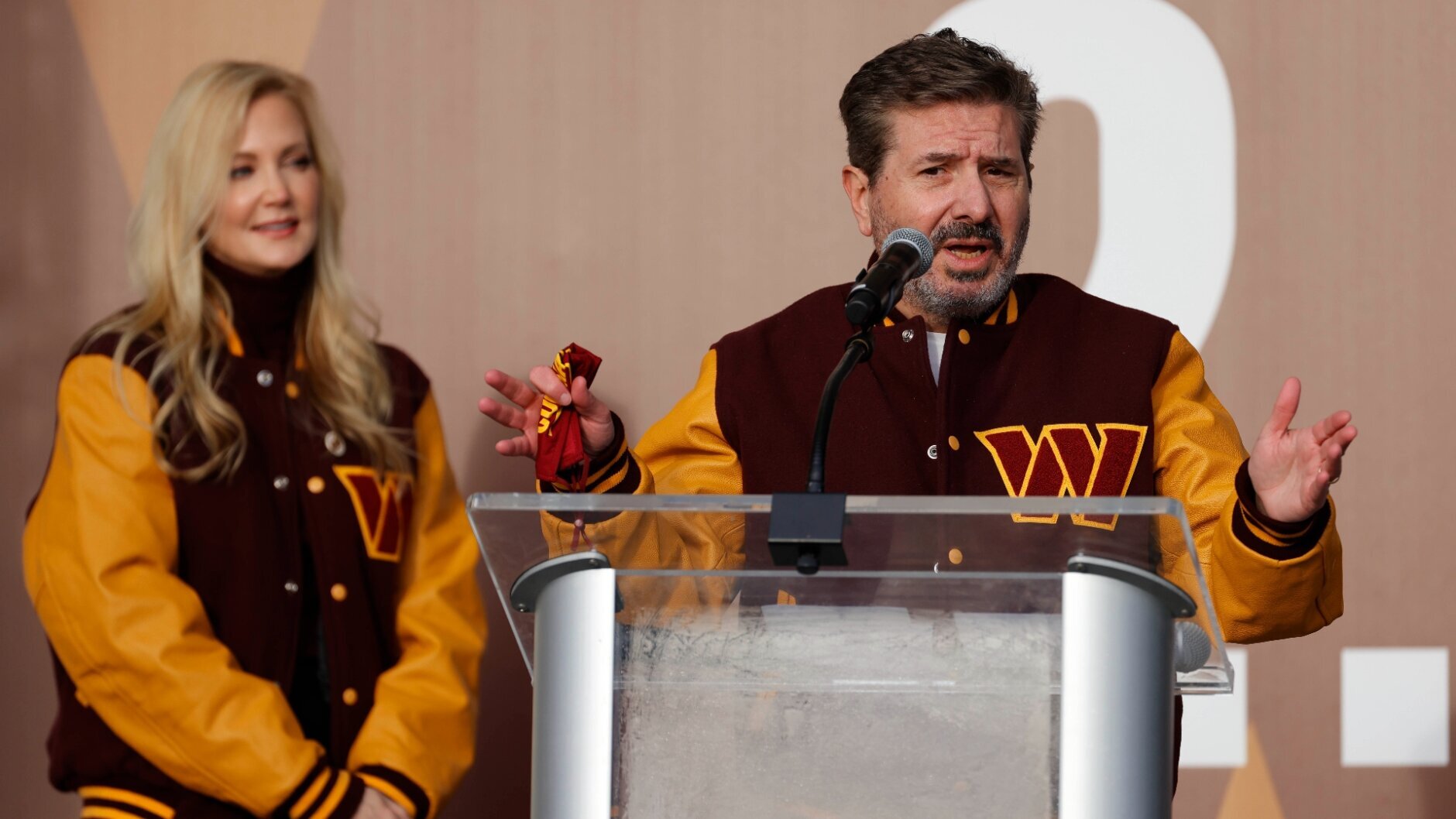
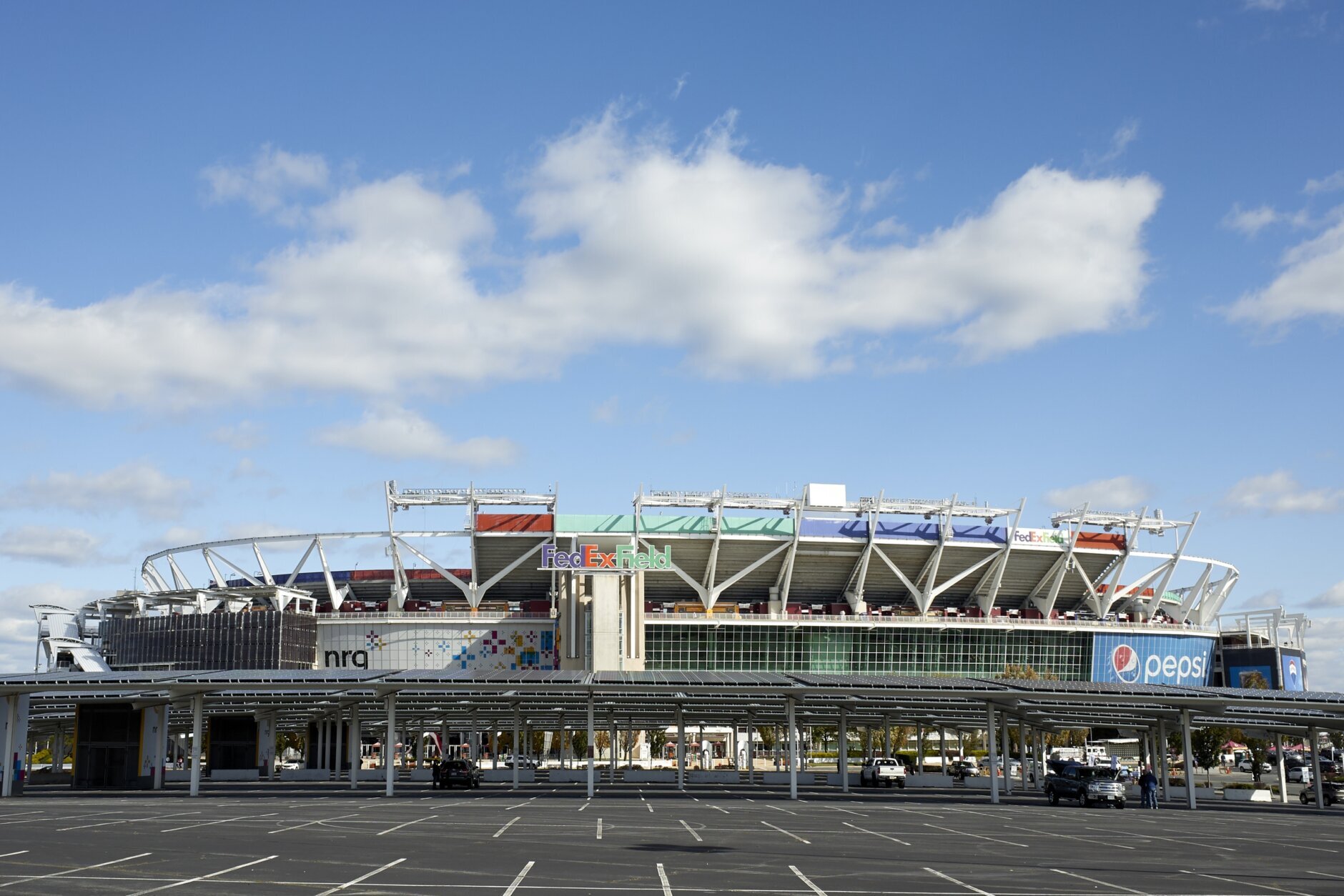
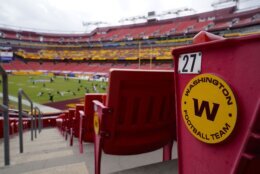
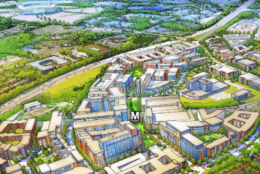
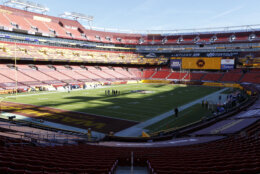

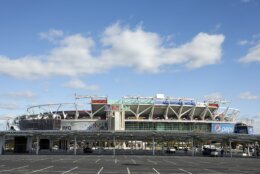
With a new name and new players, the Washington Commanders are looking for a new home.
Owner Daniel Snyder is contemplating setting up shop in D.C., Maryland or Virginia after the lease on FedEx Field expires in 2027 — assuming he stays on as owner, given the mountain of scandals piling up on him. In the meantime, many economists say public subsidies to fund football stadiums are a windfall for wealthy team owners and a waste for taxpayers.
- More Washington Commanders News
- Commanders send letter to FTC denying financial impropriety
- Commanders tap Bellamy to replace Vermillion as head trainer
“I would say football is really the poster child for investments that don’t pay,” Michael Leeds, a professor at Temple University and expert in sports economics, told WTOP.
“You’re talking about building a structure that’s going to cost, these days, a billion or over a billion dollars that is used for its primary purpose eight or nine times a year. I can’t see how that’s going to be an engine for growth in a city or state,” he said.
How does it work?
Most football stadiums in the U.S. today are built using at least some taxpayer money. State and local governments issue tax-free bonds to finance the construction of stadiums, meaning taxpayers — not the NFL or team owners — are on the hook for that debt.
Revenue from the stadium, including concessions, parking, luxury boxes and licensing, goes to the owners. Taxes from that revenue go to pay off the bonds, a process that can take decades. Local governments often raise taxes in other areas to help pay off the debt.
Team owners say the investment pays off in the long run because stadiums provide an economic boost to a community.
But many economists say governments are better off investing that money — which often runs into the hundreds of millions of dollars — into schools, infrastructure and other public services that generate far more money for the community than stadiums do.
“Over the years, there have been tons of studies,” said Pat Garofalo, director of state and local policy at the American Economic Liberties Project. “Stadiums have been examined, up, down, backward, forward … and the nearly unanimous assessment is that they don’t provide broader economic benefits for the community. They don’t create jobs; they don’t boost incomes; they don’t boost GDP; they don’t do any of the things that the community should care about.”
Construction jobs, for example, are temporary, while others, such as in concessions, are low wage and limited.
Garofalo also said “stadiums don’t exist in an economic vacuum. If people aren’t able to go to a football game, it’s not like they will just like sit around in their basement doing nothing, twiddling their thumbs, wishing for a football stadium to exist so that they could go to a football game.”
People might go to the movies or a restaurant or some other activity that generates money for local businesses, he said. “Stadium proponents like to act as … if every dollar that is spent in there would not have been spent otherwise,” but “studies show that most of it is just shuffled-around entertainment spending,” Garofalo said.
He said that for a large metro area such as D.C., the economic benefits of a stadium are “sort of a blip.”
“Whereas if you could capture all of the tax revenue that was coming out of the stadium and apply it to things that really make a difference in people’s lives — health care, education, fixing potholes, rides on the Metro, whatever you want it to be — that money could just go a lot further.”
More than parking lots
Stadium supporters argue that in areas that aren’t well developed, stadiums can spur the creation of surrounding retail, restaurants and other businesses that do generate money for the city and state. Snyder has said he wants his stadium to be an entertainment destination that draws people year-round.
“If you’re proposing to just build a big stadium with a huge parking lot around it and nothing else for miles, I would be hesitant to buy into that,” said George Perry, a professor at George Mason University who has worked in sports and entertainment marketing, including with the Washington Football Team.
“If you’re proposing a stadium that also has other reasons to visit that area and it builds an entire community around it, including maybe some residential as well, then potentially it’s something worth looking into,” Perry said.
Leeds, of Temple University, said that argument only makes sense if “we have a wasteland, a garbage dump, that has absolutely no other possible use. If there is some other use for this that would lead to tax revenue, then that doesn’t hold.”
He argues that politicians who claim a stadium will catalyze development are “basically saying we do not have the political guts to do what we’re supposed to be doing anyway” — investing in schools, housing, infrastructure and other public services.
Pride over profits
Perry and others cite the intangible benefits or hosting a football team — i.e. pride in the hometown team. Leeds and Garofalo agree that sports bring people together, but they say owners and governments should be honest when making their case that the public is financing pride, not profit.
“If that is what a city wants, that is great,” Leeds said. “I love going to Citizens Bank Park in Philadelphia. It’s beautiful. It’s a wonderful way to spend a summer evening, but I don’t kid myself that this is making Philadelphia rich.”
Spurring or riding D.C. revitalization?
Garofalo said not all sporting venues are created equal. Some pay off. He cited Capital One Arena, which hosts 220 events a year, including Wizards and Capitals games as well as concerts and other events. Perry credited Capital One — which was financed almost entirely with private money — with revitalizing D.C.’s Penn Quarter when it was developed nearly 25 years ago.
Likewise, many credit Nationals Park for driving the development of the Navy Yard in Southeast D.C., but unlike Capital One, the District wound up paying more than $700 million to build Nats Park, which hosts roughly 80 games a year. Garofalo also questions whether Nats Park had anything to do with the Navy Yard’s growth.
“I think it rode the revitalization wave that occurred across the city,” he said, pointing out that neighborhoods such as Mount Vernon and Columbia Heights all developed without a baseball stadium. “So I think the stadium proponents … want to take credit for what was naturally occurring anyway.”
Not everyone is playing ball
Leeds said NFL owners are “masters” at getting cities to identify with a team. “They play at this identification until they want a new stadium. Then it’s kind of strictly business.”
Washington Commanders President Jason Wright recently told The Virginia Mercury that the team isn’t trying to pit D.C.-area governments against each other, and that any new stadium would be a “franchise-turning investment” with substantial contribution from Snyder.
Snyder might certainly need to up his game because any desire among D.C., Maryland and Virginia to compete for a new stadium may have cooled dramatically in light of the controversies that have tarnished the team’s reputation — from pervasive allegations of workplace harassment to more recent allegations of deceptive business practices that include withholding ticket revenue from visiting teams and refundable deposits from fans.
None of it has exactly endeared Snyder to fans — or local leaders.
Maryland Gov. Larry Hogan accused the Commanders of “trying to pit everybody against each other, but we’re not going to get into a bidding war over them. And we’re not going to be proposing $1.2 billion to build them the stadium,” he told reporters in mid-March.
On April 12, Hogan signed legislation that would make up to $400 million in bonds available for development around FedEx Field — whether the Commanders stay there or not.
Hogan told reporters the measure “wasn’t really about the Commanders.” Rather, the money would be used to transform the area into a residential, retail and entertainment hub along Metro’s Blue Line.
Meanwhile, officials in D.C., where Snyder has said he’d like to see the team land, seem lukewarm to a stadium, at best. Mayor Muriel Bowser has said she’d welcome the Commanders but not at any price, and her latest budget did not include money to renovate RFK Stadium to return the team there.
Rather, she proposed a new indoor sports complex at the neglected site as part of larger revitalization, echoing Hogan’s call that the development happen with or without an NFL stadium. But the federal government owns that land, so any move to turn RFK into a football stadium would have to be approved by Congress — possibly a tall order, considering the House is investigating misconduct by Snyder and the team.
That leaves Virginia, where Gov. Glenn Youngkin and state lawmakers initially backed the creation of a football stadium authority to oversee the financing of what could be a “mini-city” anchored by the stadium. But the legislation to create the authority has been delayed and may not be taken up until a special session of the General Assembly convenes in late April.
State lawmakers are still hashing out a bid, which reportedly might come hundreds of millions of dollars less than the $1 billion that was floated in February.
Some lawmakers in Congress don’t want Virginia to shell out anything for a stadium. Rep. Don Beyer (D-Va.) has reintroduced legislation to prevent the use of federal tax dollars to subsidize the construction of sports stadiums. “Super-rich sports team owners like Dan Snyder do not need federal support to build their stadiums,” Beyer, who represents Northern Virginia, said in a news release. “Billionaire owners who need cash can borrow from the market like any other business.”
What is Snyder thinking?
If D.C., Maryland and Virginia don’t offer Snyder a lucrative package, could he uproot the team and go somewhere else entirely? Garofalo said owners often wield the “cudgel” of threatening to move, but he doubts Snyder is going anywhere.
It’s not out of the question, though.
“You’ve seen NFL teams do some pretty amazing and what seems like crazy and stupid business decisions,” Leeds said.
In part that’s because the NFL shares revenue on ticketing and merchandise. “The one thing that tends not to be shared … is venue revenue. And if a city is willing to cut a good enough deal on stadium construction and the venue revenue — we’ll give you luxury boxes, we’ll let you keep the revenue from all the other acts that come through and use the facility, we’ll give you the parking revenue, we’ll give you this, we’ll give you that — that is in a sense where the money is” for the owner.
Perry, of George Mason University, said politicians “have to be careful not to get too caught up in the ego game” of landing a football team, “because if they make a bad deal, eventually people will figure it out and they won’t be so happy.”
He added, “I think both sides need to have skin in the game. And in some cases, probably the owner needs to have more skin in the game than the local community.”
The art of the deal
Some cities are figuring out they don’t need to have as much skin in the game as they thought.
In the late 1990s and early 2000s, for example, the public’s share of the money used to build stadiums for the Cleveland Browns, Cincinnati Bengals, Denver Broncos, Seattle Seahawks and Tennessee Titans ranged from 70% to nearly 100%, according to a review by The Buffalo News.
But much smaller contributions began to emerge in later years, such as the 9% stake the public had in building the 49ers stadium in San Francisco in 2014 and the 14% stake the public had in the Atlanta Falcons’ stadium in 2017.
Leeds said that when cities began to say no to team owners, “the sky didn’t fall.”
On the other hand, stadiums that used to cost around $300 million to build 20 years ago today easily top $1 billion.
For example, the public’s share to build a stadium for the Las Vegas Raiders in 2020 amounted to about 40%, but taxpayers still had to put up $750 million for the $2 billion stadium.
“So I think you are seeing a significant decline in the percentage of funds that cities are putting up. That said, the dollar amounts of these facilities have gone so high that they’re still paying an incredible amount,” Leeds said.
In the most recent NFL stadium deal, New York officials agreed to shell out $850 million for the Buffalo Bills’ new $1.4 billion stadium.
New York commissioned the private consulting firm AECOM to see how much revenue it could expect to get back from the Bills. The study found the team would generate about $27 million a year in various taxes. The bulk of that money — $19.5 million — is actually state income tax paid by players, coaches and staff.
Garofalo called the amount that New York is plowing into the Bills’ stadium “bonkers considering how depressed the Buffalo economy is.”
“Spending [nearly] a billion dollars on just about anything in the Buffalo area would be better than the stadium,” he said.








